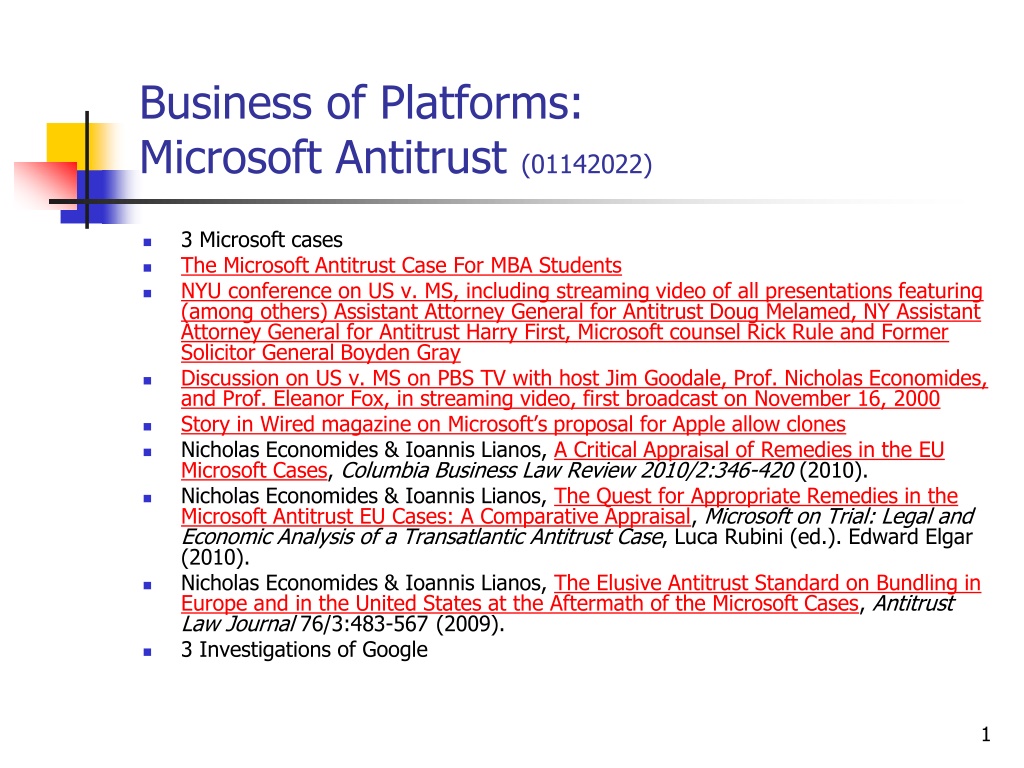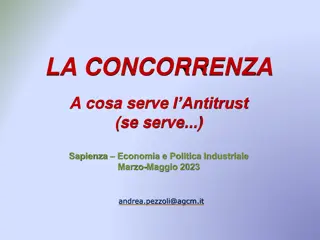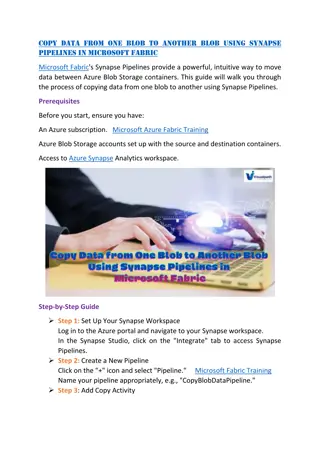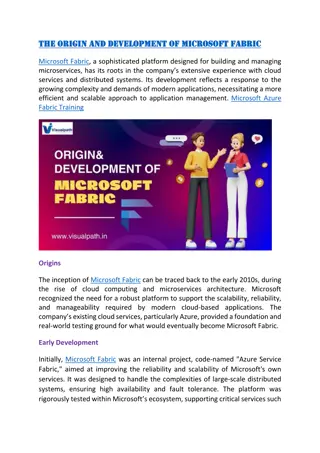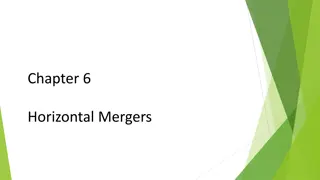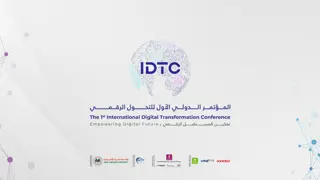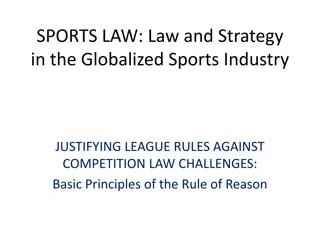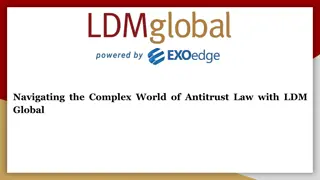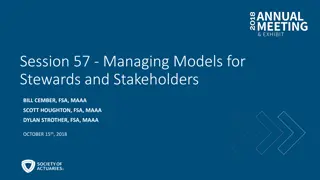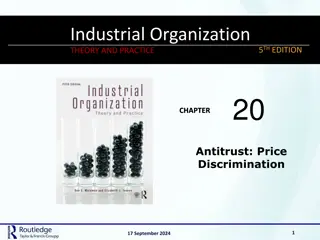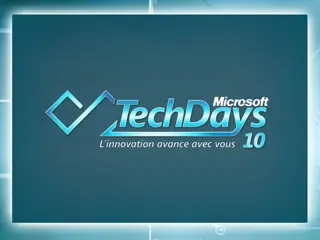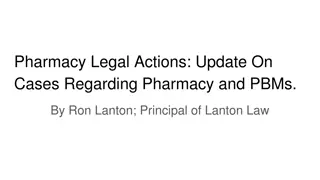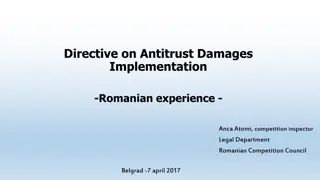Microsoft Antitrust Case Overview
The Microsoft antitrust case timeline provides a detailed account of the investigations, hearings, and legal actions taken against Microsoft, including key provisions and major events such as the bundling of Internet Explorer with Windows. The case involved various stakeholders, including government agencies, industry players, and legal scholars, shaping the landscape of antitrust regulations in the technology sector.
Download Presentation

Please find below an Image/Link to download the presentation.
The content on the website is provided AS IS for your information and personal use only. It may not be sold, licensed, or shared on other websites without obtaining consent from the author.If you encounter any issues during the download, it is possible that the publisher has removed the file from their server.
You are allowed to download the files provided on this website for personal or commercial use, subject to the condition that they are used lawfully. All files are the property of their respective owners.
The content on the website is provided AS IS for your information and personal use only. It may not be sold, licensed, or shared on other websites without obtaining consent from the author.
E N D
Presentation Transcript
Business of Platforms: Microsoft Antitrust (01142022) 3 Microsoft cases The Microsoft Antitrust Case For MBA Students NYU conference on US v. MS, including streaming video of all presentations featuring (among others) Assistant Attorney General for Antitrust Doug Melamed, NY Assistant Attorney General for Antitrust Harry First, Microsoft counsel Rick Rule and Former Solicitor General Boyden Gray Discussion on US v. MS on PBS TV with host Jim Goodale, Prof. Nicholas Economides, and Prof. Eleanor Fox, in streaming video, first broadcast on November 16, 2000 Story in Wired magazine on Microsoft s proposal for Apple allow clones Nicholas Economides & Ioannis Lianos, A Critical Appraisal of Remedies in the EU Microsoft Cases, Columbia Business Law Review 2010/2:346-420 (2010). Nicholas Economides & Ioannis Lianos, The Quest for Appropriate Remedies in the Microsoft Antitrust EU Cases: A Comparative Appraisal, Microsoft on Trial: Legal and Economic Analysis of a Transatlantic Antitrust Case, Luca Rubini (ed.). Edward Elgar (2010). Nicholas Economides & Ioannis Lianos, The Elusive Antitrust Standard on Bundling in Europe and in the United States at the Aftermath of the Microsoft Cases, Antitrust Law Journal 76/3:483-567 (2009). 3 Investigations of Google 1
Microsoft Antitrust Calendar: Early Fights 1991-93: FTC investigates MS twice, but does takes action 1994-95: DOJ s investigation ends in a 1995 settlement Key provisions: 1. Microsoft agrees to end per-processor (zero marginal price) contracts with OEMs but can use unrestricted quantity discounts 2. Microsoft shall not enter into any License Agreement in which the terms of that agreement are expressly or impliedly conditioned upon the licensing of any other Covered Product, Operating System Software product or other product (provided, however, that this provision in and of itself shall not be construed to prohibit Microsoft from developing integrated products); or the OEM not licensing, purchasing, using or distributing any non-Microsoft product. That is, no product bundling allowed by contract, but Microsoft can keep expanding the functions of its products, including Windows 2
Main U.S. Fight (1) 1997: Senator Orin Hatch (R-Utah) holds congressional hearings on Microsoft featuring Gates, Barksdale, Dell. Sen. Hatch takes the position that if present antitrust law cannot deal with Microsoft, Congress should change or enhance the antitrust laws Sun, Oracle, IBM, Netscape, and Novell form a loose coalition lobbying for antitrust action 1997: DOJ alleges anti-competitive bundling of IE with Windows (violation of 1995 decree) Dec. 1997: Judge Thomas Penfield Jackson issues preliminary injunction barring bundling of IE with Windows 98 May 12, 1998: Court of Appeals (DC Circuit) decides that 1995 decree doesn t apply to Windows 98, which was shipped with integrated IE May 18, 1998: DOJ and 20 states and the District of Columbia file the main antitrust case Oct. 1998 June 1999: Microsoft trial takes place with an accelerated schedule 3
Main (U.S.) Fight (2) Nov. 5, 1999: Judge Jackson issues findings of fact, siding very strongly with the plaintiffs Dec. 1999: Prominent antitrust scholar, Judge Richard Posner appointed mediator for settlement discussions April 1, 2000: Settlement talks break down after States hold out in proposed agreement. April 3, 2000: Judge Jackson issues conclusions of law June 7, 2000: Judge Jackson orders breakup of Microsoft in two companies February 27, 2001: DC appeals court hears appeal June 28, 2001: DC appeals court reverses breakup September 6, 2001: DOJ seeks quick settlement without breakup November 2, 2001: DOJ and Microsoft propose settlement; nine states settle and nine do not March 18, 2002: Nine litigating states start remedies trial in front of Judge Colleen Kollar-Kotelly November 1, 2002: Judge Colleen Kollar-Kotelly rules that the proposed settlement serves the public's interest and rejects positions of litigating states November 29, 2002: All states except Massachusetts and West Virginia accept the settlement; eventually, both Massachusetts and West Virginia agree with the settlement 4
Microsofts business then Software Operating systems for PC (Windows 95, 98, NT, 2000) Operating systems for local network and Internet servers (Windows NT, 2000) Back-office products for network and Internet servers Internet Clients Internet Servers Desktop applications (Office, Word, Excel, Access, PowerPoint, MS-Money, etc.) Games Programming languages (Visual Basic, Java) Hardware Mice, keyboards Services Internet service (MSN, WebTV) Internet content (MSN) Product support 5
The allegations. Microsoft accused of: 1. Monopolization of the market for operating systems ( OSs ) for PCs; ( 2, Sherman Act) 2. Anti-competitive contractual arrangements with various vendors of related goods such as with computer manufacturers and Internet Service Providers ( ISPs ) and other actions taken to preserve and enhance its monopoly; ( 2, Sherman Act) 3. Attempting monopolize the market for Internet browsers (but failing to succeed); ( 2, Sherman Act) 4. Anti-competitive bundling of the Internet Explorer ( IE ), with the Windows operating systems; ( 1, Sherman Act) 6
Monopolization under 2 of the Sherman Act is illegal if the offender took anti-competitive actions to acquire, preserve, or enhance its monopoly Sherman Act 2: Every person who shall monopolize, or attempt to monopolize, or combine or conspire with any other person or persons, to monopolize any part of the trade or commerce among the several States, or with foreign nations, shall be deemed guilty of a felony. Modern interpretation: For monopolization, plaintiffs have to prove that the defendant 1. Possesses market power 2. Willfully acquired or maintained this monopoly power as distinguished from acquisition through a superior product, business acumen, or historical accident 7
Attempting to monopolize is illegal (Sherman Act, 2) Bundling, and, more generally, price discrimination could be illegal if it has anti-competitive consequences Exclusionary contracts could be illegal if they have anti- competitive effects To prove attempting to monopolize (under Sherman Act 2), plaintiffs have to prove that the defendant 1. Engaged in predatory or anti-competitive conduct 2. with specific intent to monopolize 3. and that there was a dangerous probability that the defendant would succeed in achieving monopoly power 8
Findings of fact and conclusions of law The judge s findings of fact (Nov. 1999) and conclusions of law (April 2000) found for the plaintiffs (US DOJ and 19 States) in almost all the allegations against MS The judge found: Microsoft has a monopoly in the PC operating systems market (for Intel-based computers) where it enjoys a large and stable market share Microsoft used its monopoly power in the PC operating systems market and harmed competitors Microsoft hobbled the innovation process Microsoft actions harmed consumers Various Microsoft contracts had anti-competitive implications, but MS is not guilty of anti-competitive exclusive dealing contracts hindering the distribution of Netscape 9
On June 7, 2000, after an extremely short hearing, Judge Jackson issues his remedies decision: split Microsoft into two companies, one for operating systems (Windows 98, NT, and 2000), and one for all the rest, including applications (MS-Office, etc.) impose business conduct restrictions 10
Judge decided that MS has monopoly power in the OS market for Intel compatible PCs Problem: Low price of OS; if Microsoft is able to exercise monopoly power, why does it not exercise it through price? If the price of PC hardware is pH and the demand elasticity is | |, the monopoly price of Windows is pW = pH/(| | - 1) If pH = $1,800 and | | = 2, pW = $1,800, while the actual price to OEMs was $40-60 Requires a very large demand elasticity of | | = 31 to get a monopoly price of pW = $60 11
Possible explanations for the low price of Windows To hook consumers but when will MS increase the price? Competition from installed base of Windows but (i) very difficult to uninstall Windows (ii) consumers buy much better new PCs faster than traditional obsolescence rates would imply (iii) Windows price is small compared to the PC+Windows bundle To reduce pirating but why is then MS-Office price high? Because it allows for higher prices of complementary goods but MS does not monopolize all the complementary goods markets, therefore it would be optimal to charge the monopoly price on Windows Because of the existence of actual and potential competition 12
Monopoly may maximize social surplus when there are network externalities present under conditions of incompatibility; value of de facto standardization 13
Microsoft appealed, and was granted a stay of all parts of the District Court decisions until the appeal is heard Summary of court of appeals decision: Microsoft s breakup and other remedies imposed by the District Court were vacated Microsoft was found liable of monopolization of the operating systems market for PCs Microsoft was found not liable of bundling Microsoft was found not liable of attempting to monopolize the Internet browser market The district court judge Thomas Penfield Jackson was taken out of the case for improper behavior The case was remanded to the District Court for remedies determination for the monopolization charge 14
Bundling issue The Appeals Court instructed the District Court to examine the bundling of IE and Windows (if plaintiffs bring it up) under a rule of reason where the consumer benefits of bundling are balanced against the damage of anti-competitive actions In face of the Appeals Court decision, DOJ decided not to pursue the bundling issue and announces that it will not ask for a breakup of Microsoft 15
The Settlement: On November 6, 2001 the United States, the states of New York, Illinois, North Carolina, Kentucky, Michigan, Louisiana, Wisconsin, Maryland and Ohio, and Microsoft announced a settlement California, Connecticut, Iowa, Massachusetts, Minnesota, West Virginia, Florida, Kansas, Utah, and the District of Columbia pursued the suit further to a full remedies trial (started March 11, 2002) in front of U.S. District Judge Colleen Kollar-Kotelly These States proposed making the source code of Windows and IE public, freezing Windows so that additional functionality would be sold as an additional good, making all APIs public, and other severe remedies. On November 12, 2002, Judge Colleen Kollar-Kotelly imposed the final judgment that had only small differences from the original proposed settlement 16
Settlement terms A. Provisions seen as favorable to Microsoft 1. No breakup 2. Microsoft can expand functions of Windows 3. No general restrictions on bundling 4. No mandatory disclosure of source code B. Provisions seen as favorable to the plaintiffs 1. Broad scope of definition of middleware products (including browser, e-mail clients, media players, instant messaging software, etc.) 17
Settlement terms (cont.) 2. Requirement to partially disclose middleware interfaces Microsoft is required to provide software developers with the interfaces used by Microsoft's middleware to interoperate with the operating system 3. Requirement to partially disclose server protocols The settlement imposes interoperability between Windows and non-Microsoft servers of the same level as between Windows and Microsoft servers. 18
Settlement terms (cont.) 4. Freedom to install middleware software Computer manufacturers and consumers will be free to substitute competing middleware software on Microsoft's operating system. 5. Ban on retaliation Microsoft prohibited from retaliating against computer manufacturers or software developers for supporting or developing certain competing software 19
Settlement terms (cont.) 6. Uniform pricing of Windows for same volume sale Microsoft will be required to license its operating system to key computer manufacturers on uniform terms for five years. Microsoft will be allowed to provide quantity discounts. 7. Ban on exclusive agreements; contract restrictions Microsoft will be prohibited from entering into agreements requiring the exclusive support or development of certain Microsoft software 20
Multi-year investigation of MS by the EU on interoperability between non-Microsoft servers and Windows clients bundling of Windows Media Player with Windows The EU (i) Found Microsoft liable on both issues (ii) Imposed a $609 million fine (iii) Required MS to produce a version of Windows without WMP (called Windows-N) but without a requirement to sell it for less than Windows (iv) Required MS to make public and license at a low price the communications protocols between Windows clients and non- Windows servers Less than 2000 copies of Windows-N were sold 21
Second EU case on browser In December 2007, Opera (an Internet browser) brings the issue of Microsoft bundling IE with Windows to the EU In January 2009, the EU issues a statement of objections to Microsoft, alleging a violation of Article 82 EC for tying IE to Windows Given the previous decision on WMP, liability of Microsoft seems certain Microsoft offers to sell Windows 7 without any browser pre-installed (users would use FTP to download browser) Proposal rejected by the EU in favor of a choice screen approach 22
Choice screen Is imposed through Windows update on all users in the EU who are using IE as a default (on all Windows products) Will allow users choice among IE, Firefox, Safari, Opera, and Chrome On December 16, 2009, the Commission accepted the final choice screen proposal, and the matter ended In my opinion, the choice screen should have been made available to all, not just IE users Present solution gives incentives to bribe OEMs to choose a non-IE default browser, so the choice screen does not appear Benefits the non-open-source non-IE browsers (Chrome) 23
Investigations of Google FTC investigation, leaked two weeks before presidential election to create the impression that Obama was tough on antitrust EU investigations Both, mainly on placement in organic search Aggregators Placement of search results of Google affiliates Agreements with Android manufacturers 24
US investigation fizzled FTC accepted proposed commitment Google proposed to clearly label the links of its affiliates (A joke!) 25
4/15/2015, EU sues Google Sent Google a Statement of Objections Allegations: Google favors its own comparison shopping services (for airline tickets, hotels, etc.) by placing them on top of the first organic search page Vertical issue, may be hard for EU to win 26
Allegations cont. Google demoted placement of aggregators such as Foundem Horizontal issue 27
The June 2017 Decision Dominance: Google is dominant in the market for general search Abuse: Google favors its comparison shopping service by displaying it prominently in its Shopping Unit and demoting rival services Foreclosure: the abuse caused free traffic to be diverted from rivals to Google, and rivals are unable to recoup the lost traffic by other sources Record fine: EUR 2.42 billion (vs EUR 1.06 billion in Intel) Remedy: Google to display rival comparison shopping services in its result pages according to the same processes as its own service 28
